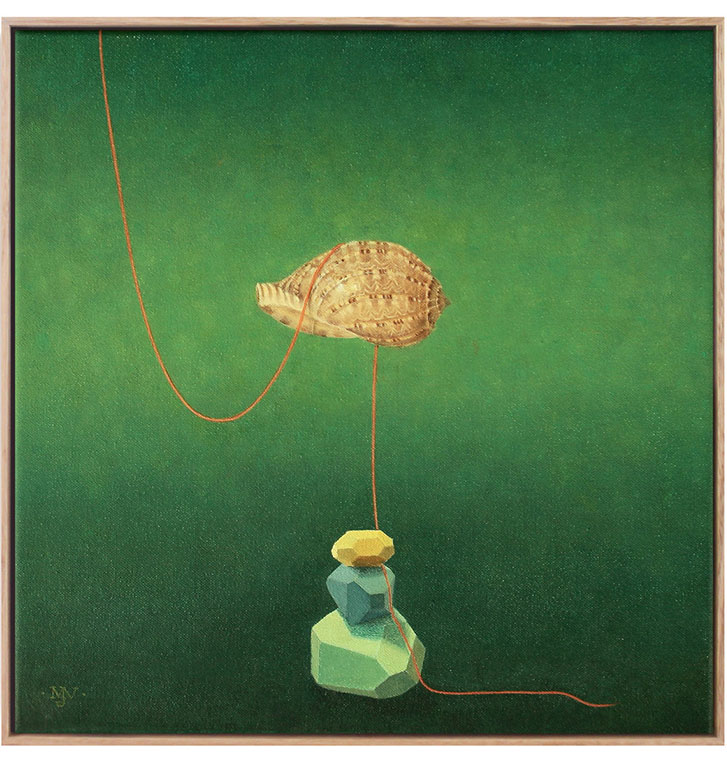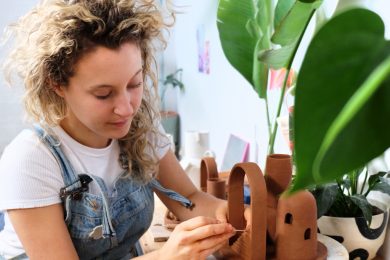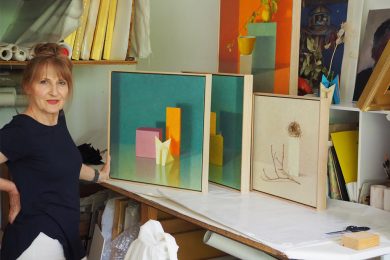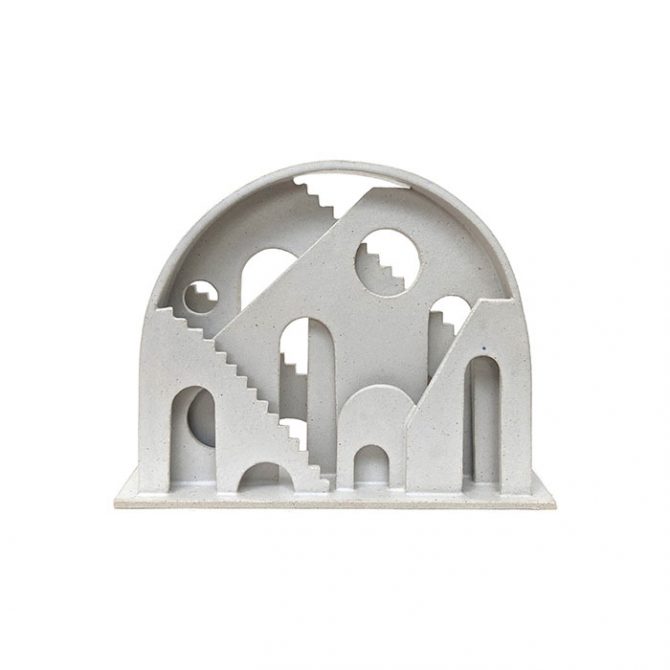
In Conversation: Grace Brown & Margaret Voterakis
Our first exhibition for 2021, Utopian Pursuits, pairs Grace Brown’s labyrinthine architectural sculptures with Margaret Voterakis’s still-life paintings of geometric forms and traditional subjects such as fruit, shells and houseware.
Two very different artists by way of practice, training and medium, the work from each of these creatives complements the other on a level that is both enthralling and strangely familiar. Though never having met in person, Brown and Voterakis see parallels in their work and share an intuitive, organic process.
Ahead of Utopian Pursuits opening in our Fitzroy gallery on Thursday February 25, Brown and Voterakis shared a conversation covering planning methods, story building and the concept of Utopia. Read it all below and watch a short film of Grace at work in her studio here!
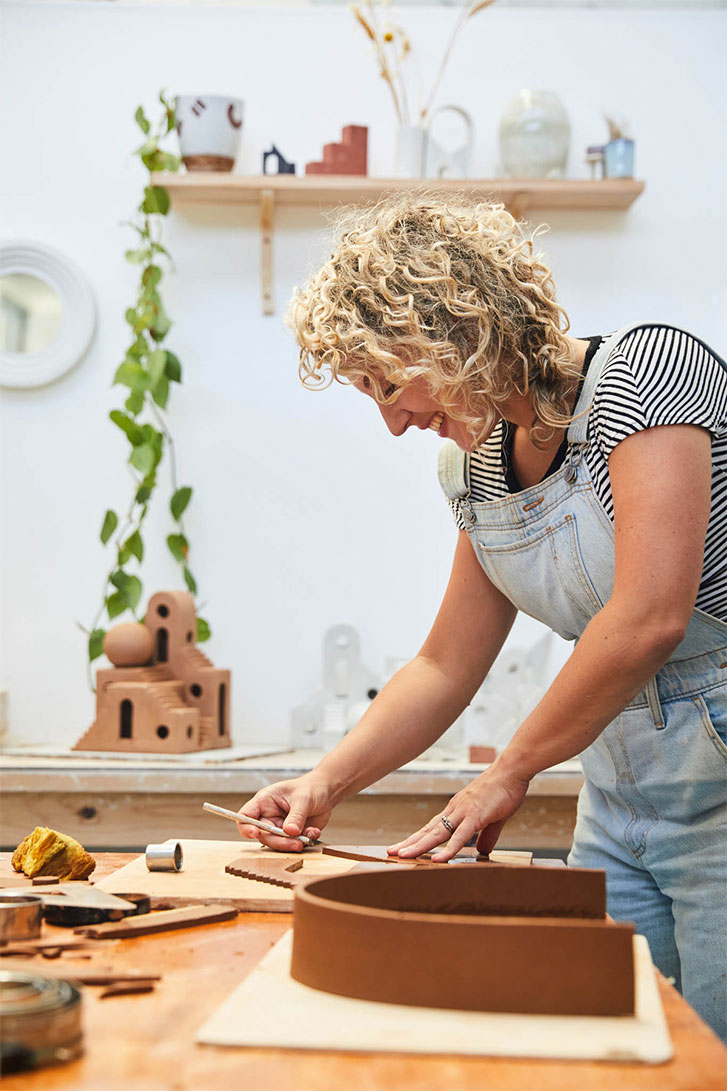
Margaret: I am interested in the planning methods you use for your work. To what extent is drawing, or even model building, involved in the process?
Grace: I usually begin by drawing a rough sketch of the overall feel of the piece on a flat piece of clay. This means I can wipe parts away and readjust the shape and map out measurements. Once I’ve landed on a design, I then start with a flat shape, which acts as the base of the sculpture. I use the same measurements within each piece; usually in multiples of 6 or 7, so I can easily divide up each part of the sculpture and there is consistency within the collection.
Once I have the base then the walls go up and from there it’s a very organic process. Often I will be making a piece and a doorway and wall won’t perfectly align, so I have to think beyond what a structure should look like and consider creating parts that may not make sense in our reality.
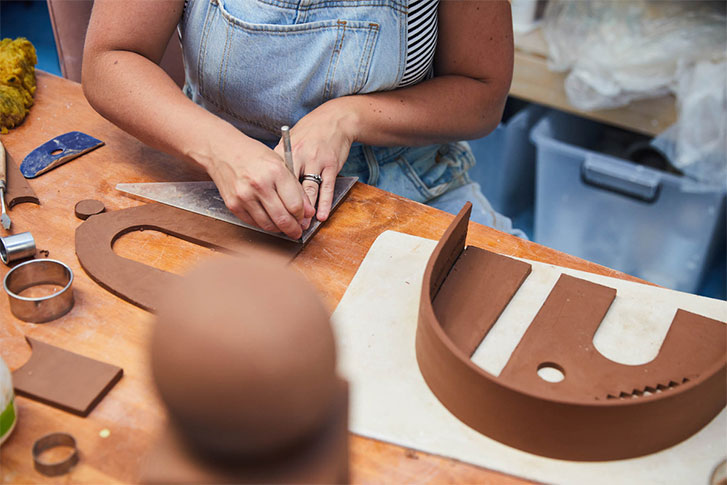
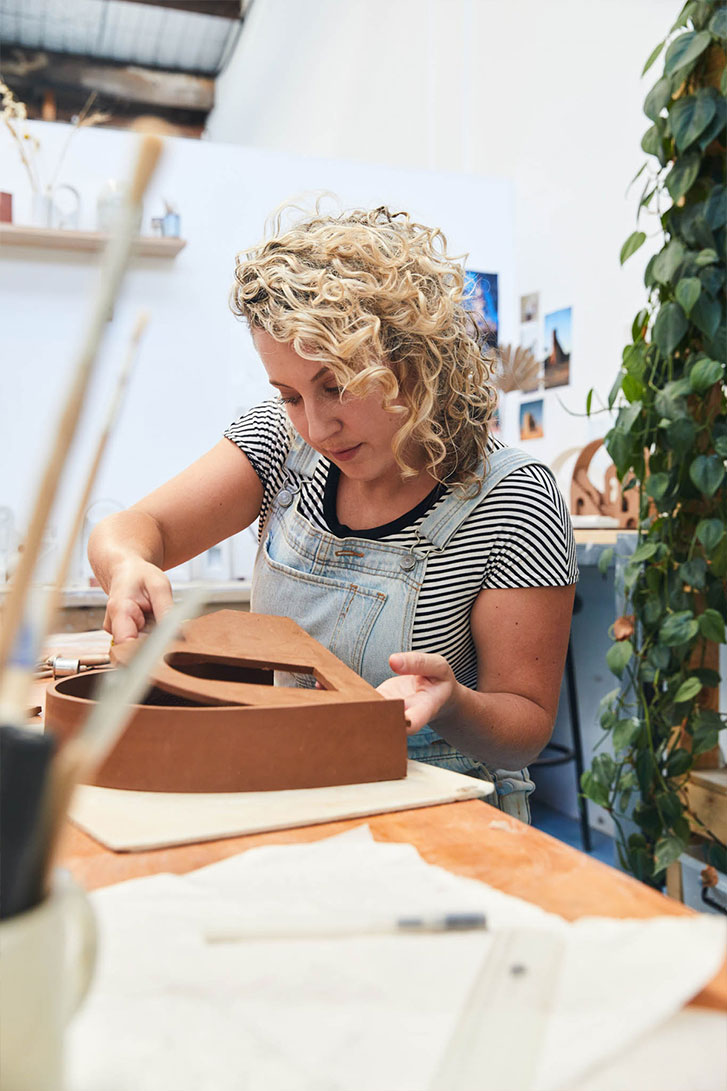
Grace: How do you choose the subjects for your still life paintings? Does each object hold significance to you or do you find it more of an organic process as you paint?
Margaret: I start by gathering a group of elemental shapes and organic forms. They can be boxes, cylinders, balls, and paper folds as well as well as objects such as shells, stones and sticks. There are times when I have already had an ‘ah-ha’ moment before I begin which quickly informs the direction of my composition and how it evolves. Regardless, I spend a lot of time organising the elements of the design until the objects ‘speak to one another’ in a way that speaks to me. This is followed by quick drawings which help to cement an idea and design.
While some of the objects may have held some significance in my own history, I rarely consider this important in the initial stage of the design process. However as the painting evolves, and my mind moves into a more meditative state, the creative process and painting take on their own lives and I start to see the objects as having amorphous personalities coexisting on a dreamlike stage. It is often at this point that the title of the work sometimes makes an entrance, unbidden but oddly suitable. I would say painting for me is certainly an organic and instinctive process.
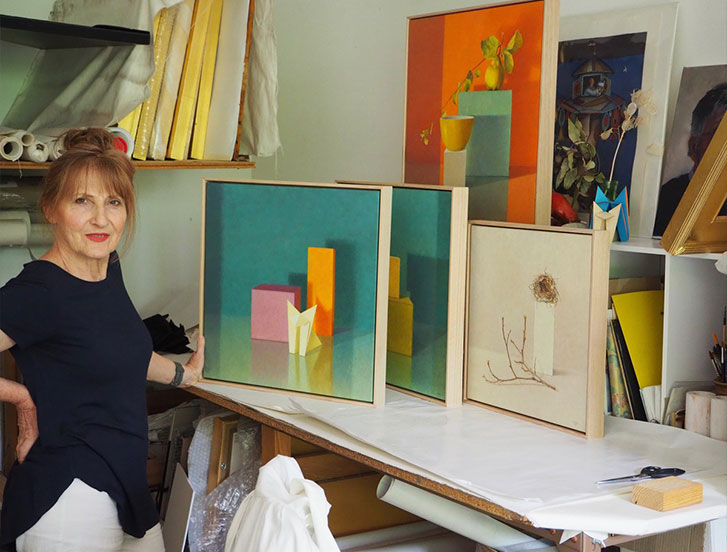
Margaret: Your work appears reminiscent of ancient artefacts and monuments. Have these things inspired you and where else do you draw inspiration?
Grace: Absolutely! I love learning about monuments and ancient civilizations. Especially remnants of fallen monuments in desert landscapes which have influenced my love of raw textures and the contrast between rough and smooth surfaces.
Another huge inspiration is science fiction. Although I love the story arcs within, I often find I become enthralled with the sub-plots more than the main story; for example, where have the characters travelled from? What is the atmosphere of their world like? Is it habitable? What sort of homes do they live in? And what do their environments look like?
There’s a scene in one of the latest Star Wars movies that shows a floating mountainous planet for a few seconds. I often come back to it and imagine what everyday life is like for those that live there and how different it would be from living here.
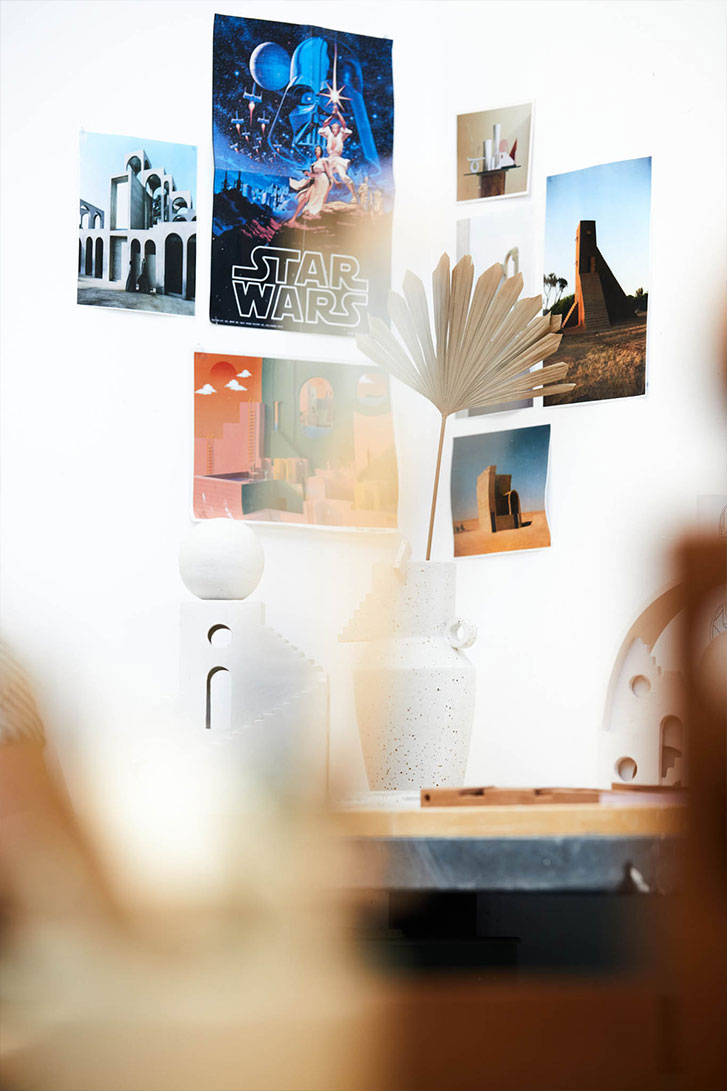
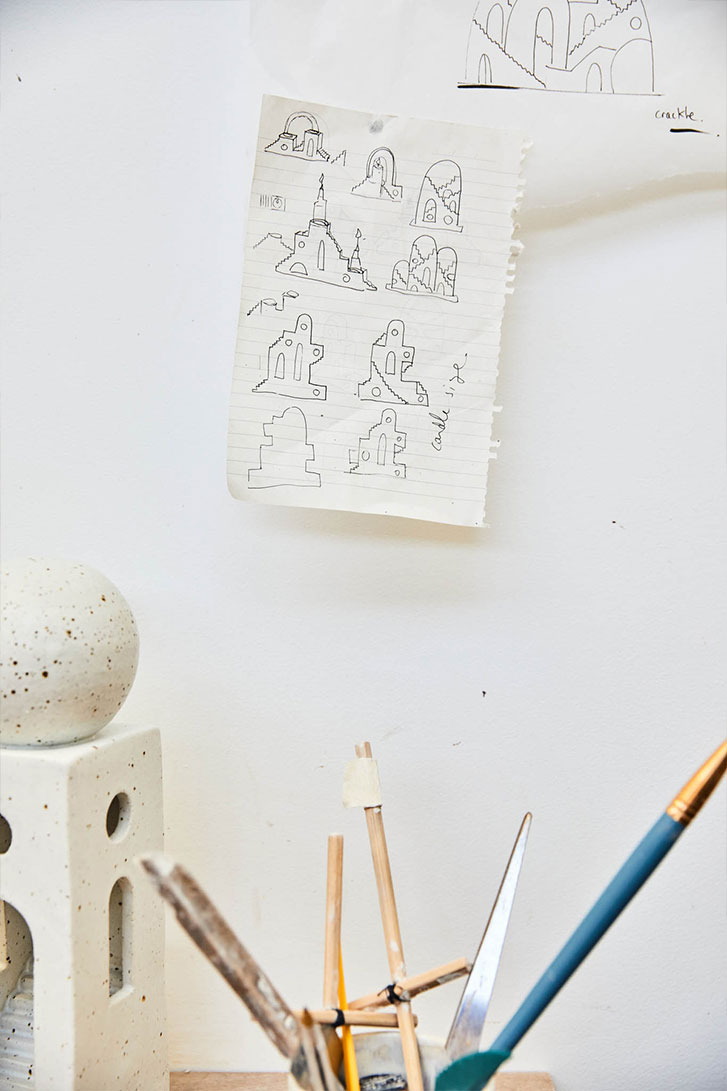
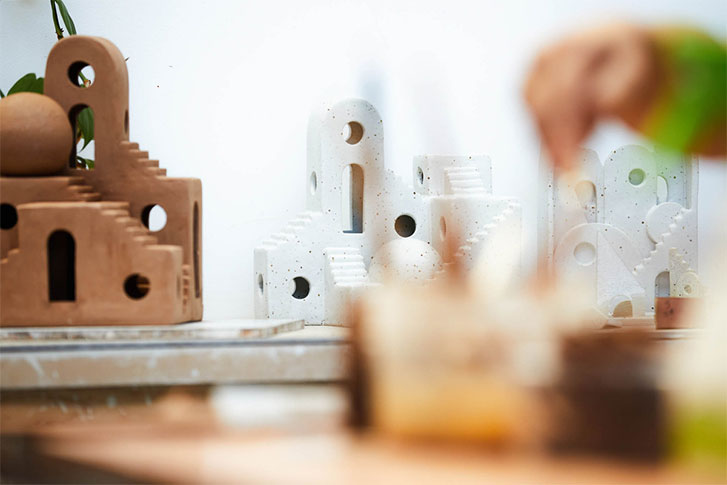
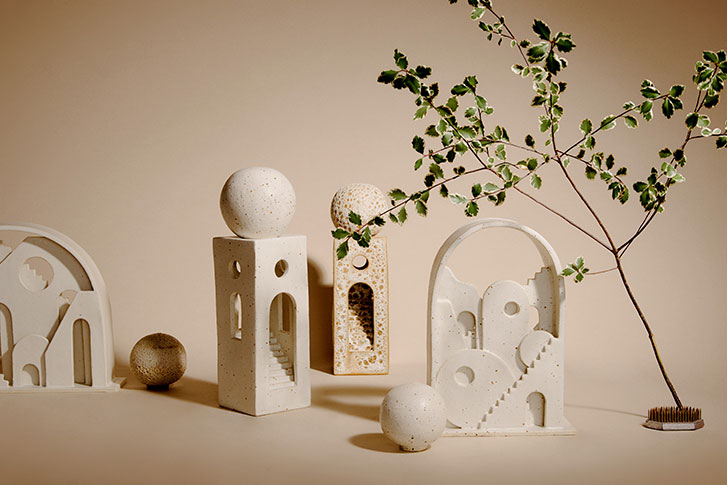
Margaret: Are you conscious of a sense of story building while constructing your pieces, or do they evolve for the viewer to find the narrative?
Grace: When I’m working on pieces I am often considering who lives there and what their story is, but it’s a very fluid idea. I’ve always been drawn to the idea of ‘home’, how we can be connected to a particular place or object, and whether we can take these ideas and feelings with us as we move around the world. I hope that whoever views my work is momentarily transported to another reality, and creates a narrative that takes them to another time and place.
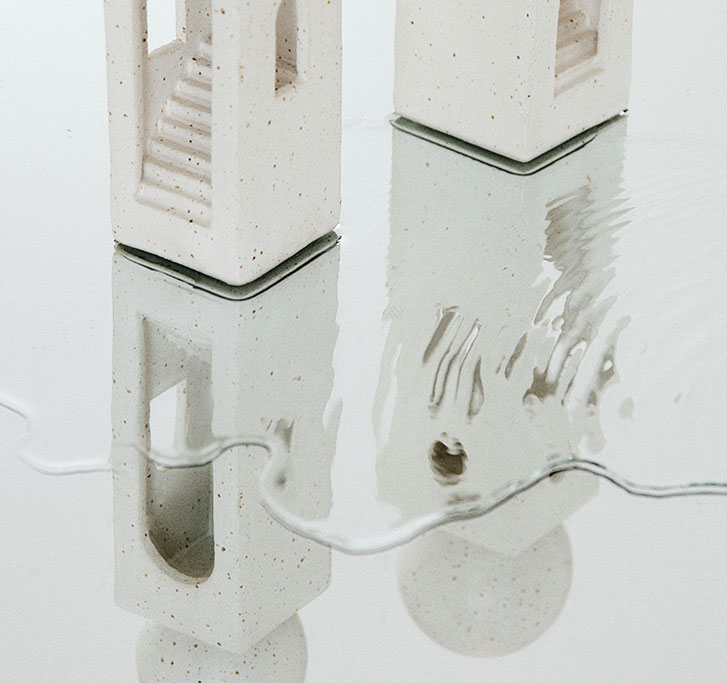
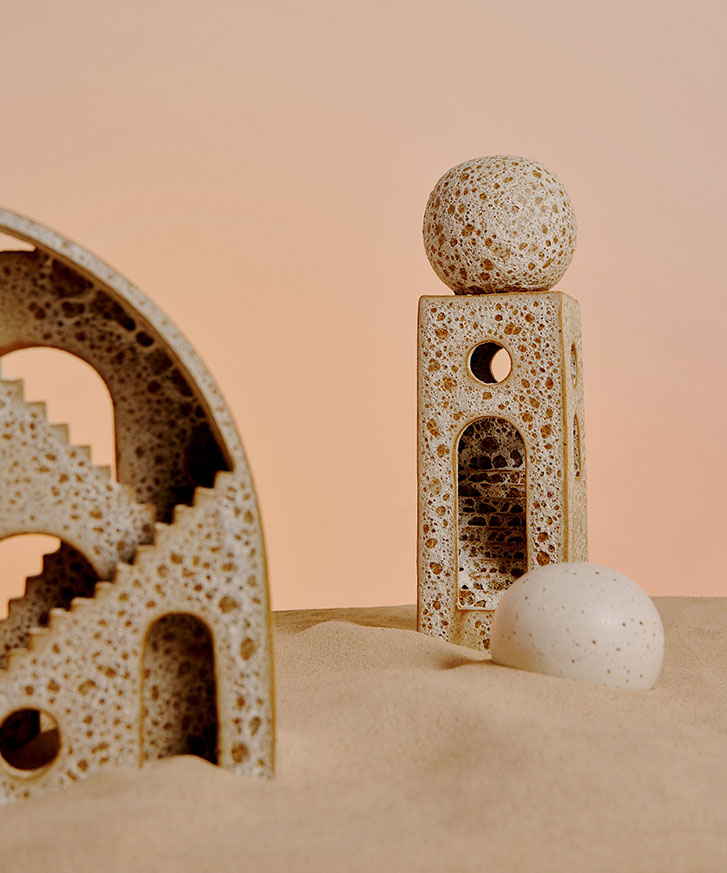
Grace: While creating this collection you mentioned that you were “led by some mysterious process”. Can you tell me more about how this informs your practice?
Margaret: I touched earlier on the enigmatic process to my painting, which I think is common to many painters. There is a point when the painting seems to take charge and steer the momentum of the work until finally I look at the painting and I find myself thinking “How did I get there!?”.
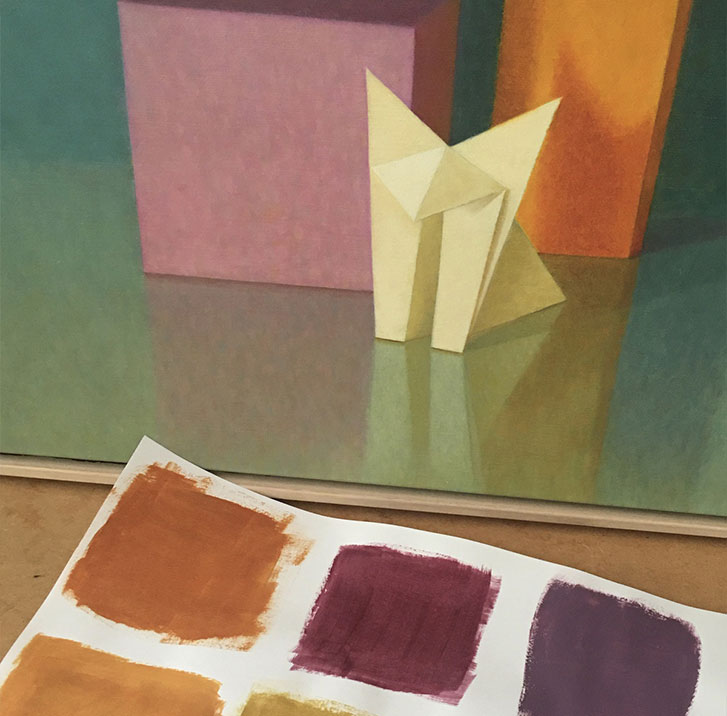
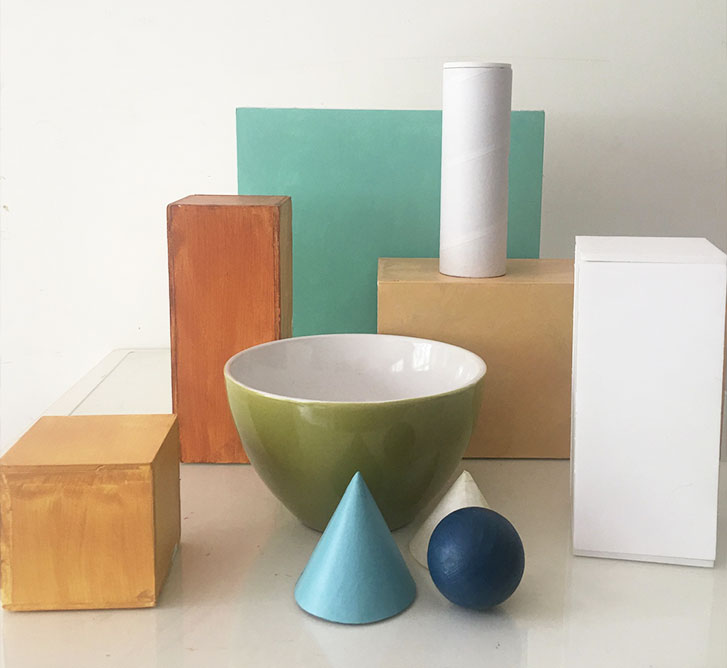
Grace: And finally, what does Utopia mean to you?
Margaret: Utopia as a place of perfection. It is worth striving for, but even if we used the very best of what was available to us in the way of materials, tools, objects and the limits of our own processes and abilities, realistically we would never get there.
However, I believe that imperfections are part of our flawed world and small imperfections in an artwork can add to the whole. Within my practice, Utopia is achieving the best I am capable of within the limits of what I can access, and arriving at a result with elements of intangible attraction.

